
The breakeven point is a crucial financial metric for any business. It represents the point at which total revenues equal total costs, meaning the business is neither making a profit nor incurring a loss. Understanding your breakeven point helps you determine the minimum sales needed to avoid losses and start making a profit. This is a key element for planning and setting sales goals, particularly for new businesses or product lines.
In this blog, we’ll explore what the breakeven point is, how to calculate it, and its applications in various business and financial scenarios. We will also discuss the benefits and limitations of breakeven analysis and how tools like HAL ERP can help streamline this process.
Key Takeaways:
The Break-Even Point (BEP) is the point at which a company’s total revenues equal its total costs, meaning there is neither a profit nor a loss. At this point, all the fixed and variable costs have been covered, and any sales beyond this threshold contribute directly to the company’s profit. When a company operates at the break-even point, it is essentially covering all its expenses without generating profit, and any sales beyond that point will contribute to profitability.
The formula for calculating the Break-Even Point (BEP) is:
Break-Even Point (BEP) = Fixed Costs ÷ Contribution Margin
Understanding the breakeven point provides clarity on where your business stands in terms of covering costs. Next, let’s explore how this metric can be applied across various aspects of your business.
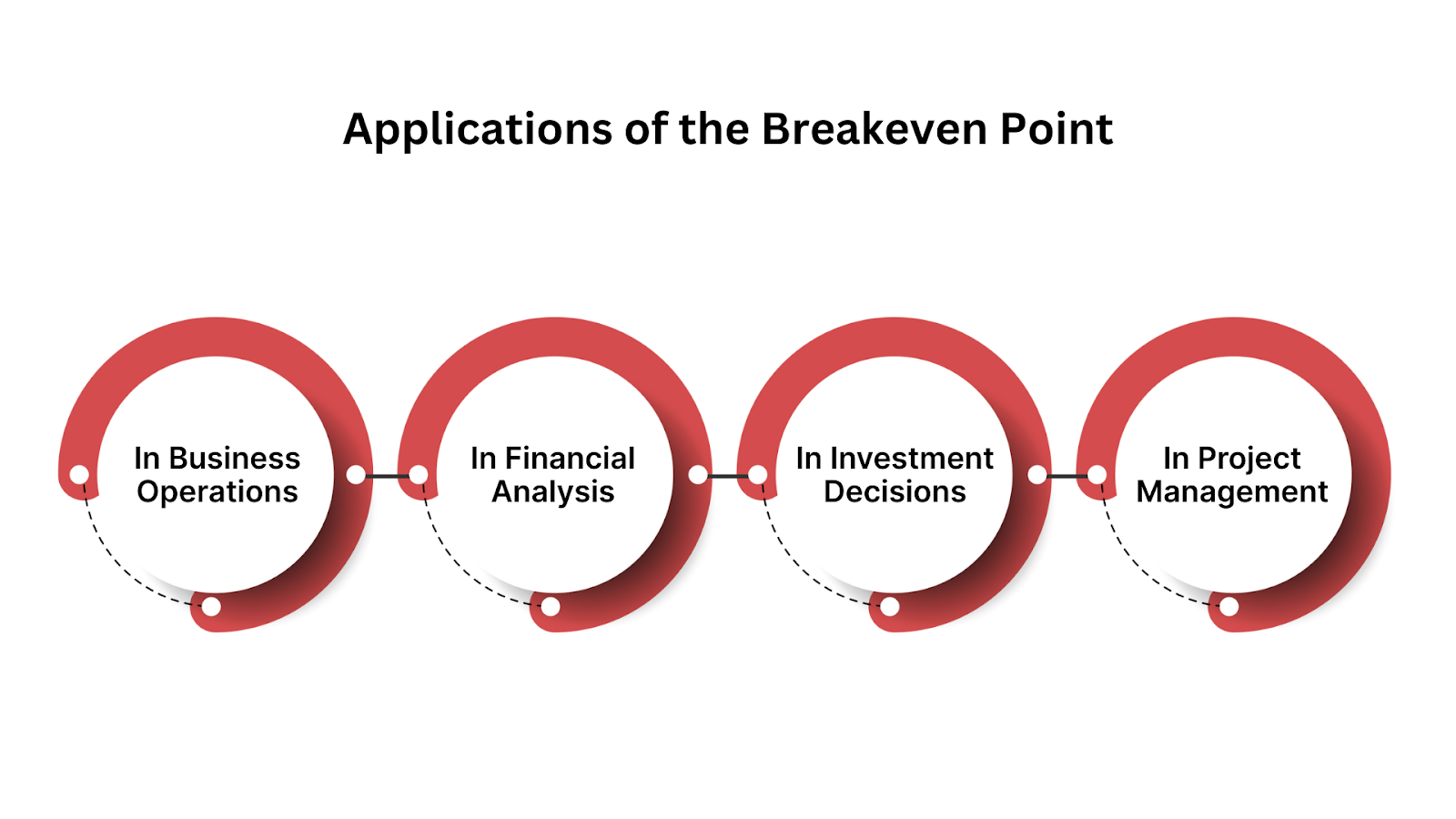
The breakeven point is a key financial concept that plays a critical role across various areas of business and finance. Understanding this point is crucial for making informed decisions, optimizing strategies, and ensuring long-term sustainability. Below are some of the key applications of the breakeven point:
To simplify your breakeven analysis and financial management, HAL ERP offers powerful tools for accounting, expenses, invoicing, etc, that automate key processes, provide real-time insights, and help you make data-driven decisions. Book a demo today!
Knowing how the breakeven point is used in various business and investment decisions can help you optimize strategies. Let’s now take a deeper look at how to calculate your break-even point.
Calculating the breakeven point is essential for determining how much revenue or how many units need to be sold for a business to cover its costs without making a profit or loss. There are two main ways to calculate the breakeven point: by units sold and by sales dollars.
For Units: The formula for calculating the breakeven point in units is:

Break-Even Point (Units) = Fixed Costs ÷ (Selling Price per Unit - Variable Cost per Unit)
For Sales Dollars: The breakeven point can also be calculated in sales dollars using the following formula:
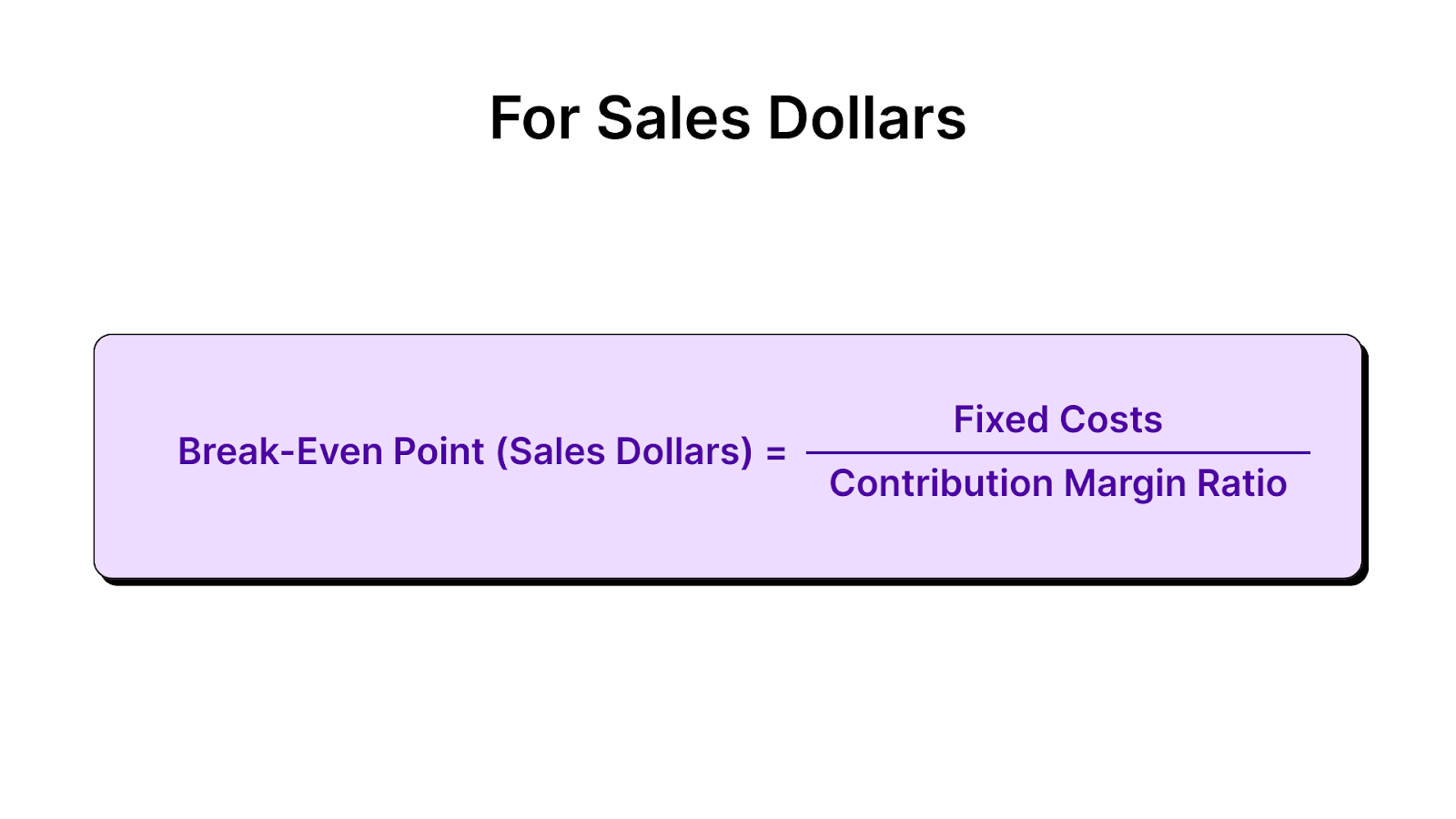
Break-Even Point (Sales Dollars) = Fixed Costs ÷ Contribution Margin Ratio
Omar runs a retail construction supply shop in Riyadh, selling materials like cement bags, tiles, and basic hardware to contractors and individual buyers. He wants to know how many cement bags he must sell each month before he starts making a profit.
His fixed costs (which don’t change with sales) are:
For his most popular product, a 50kg cement bag:
Contribution Margin = Selling Price − Variable Cost
= 20 − 12
= SAR 8 per bag
Every bag sold contributes SAR 8 toward covering Omar’s fixed costs.
Break-even units = Fixed Costs ÷ Contribution Margin
= 70,000 ÷ 8
= 8,750 bags
So, Omar must sell at least 8,750 bags of cement per month to break even.
Contribution Margin Ratio = Contribution ÷ Selling Price
= 8 ÷ 20
= 0.40 (40%)
Break-even sales = Fixed Costs ÷ CM Ratio
= 70,000 ÷ 0.40
= SAR 175,000
For daily planning, Omar knows he must sell about 292 bags per day (if open 30 days/month). This insight helps him negotiate better with construction contractors, run bulk discounts for large orders, and ensure he maintains sales volumes above the break-even point.
Also Read: Understanding Profit Margin and How to Calculate It
With a solid understanding of the break-even point, it's essential to know how to calculate it accurately. In the next section, we'll discuss how breakeven analysis influences business decisions and investment strategies.

The breakeven point (BEP) is a powerful tool not just for business owners, but also for investors, as it plays a key role in decision-making across various sectors. Let’s explore its applications in both business operations and investment strategies:
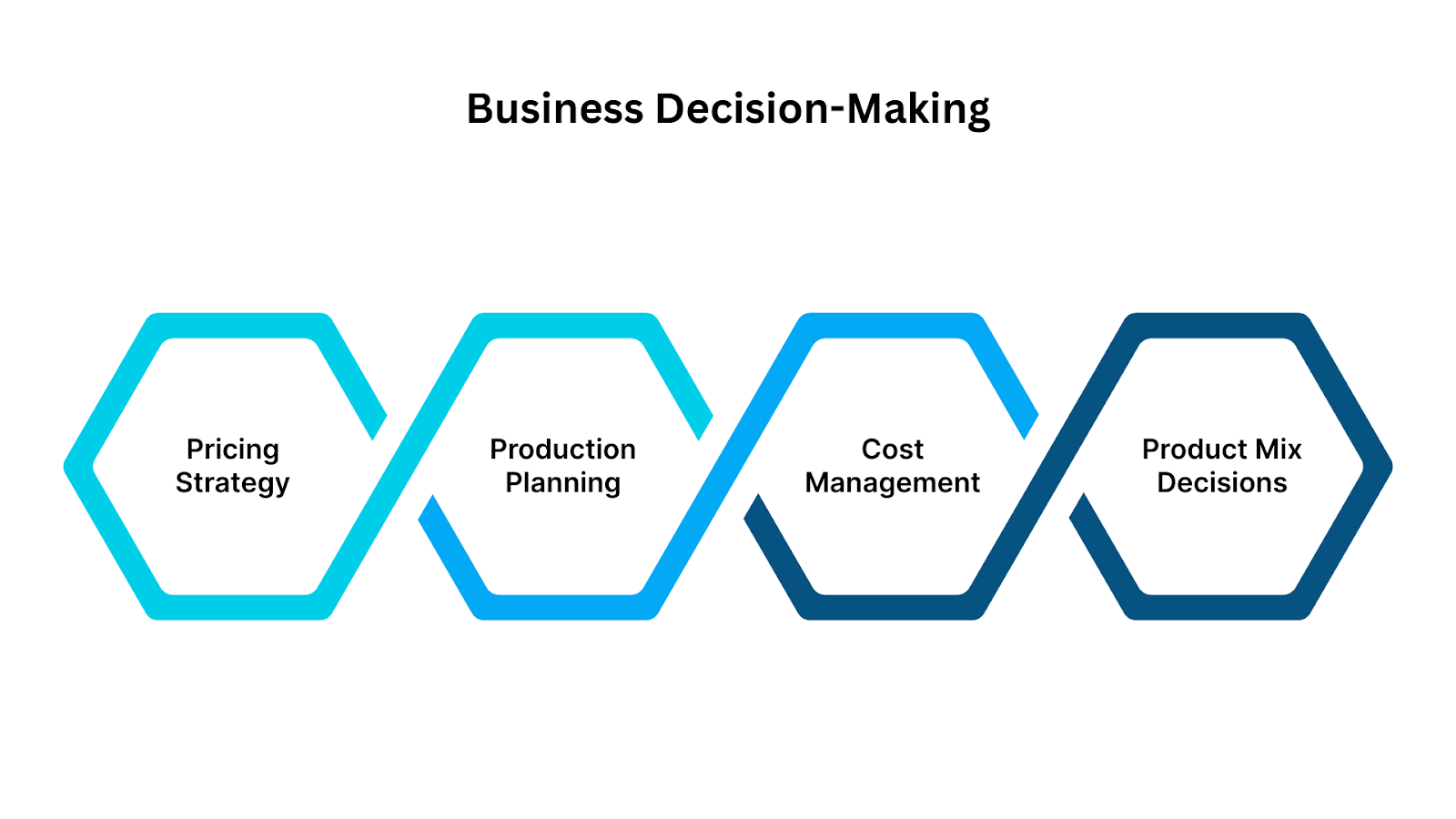
Business Example:
A bakery with fixed costs of USD 50,000 (SAR 187,500) per month, variable costs of USD 10 (SAR 37.5) per cake, and a selling price of USD 50 (SAR 187.5) per cake needs to sell 1,250 cakes monthly to break even.
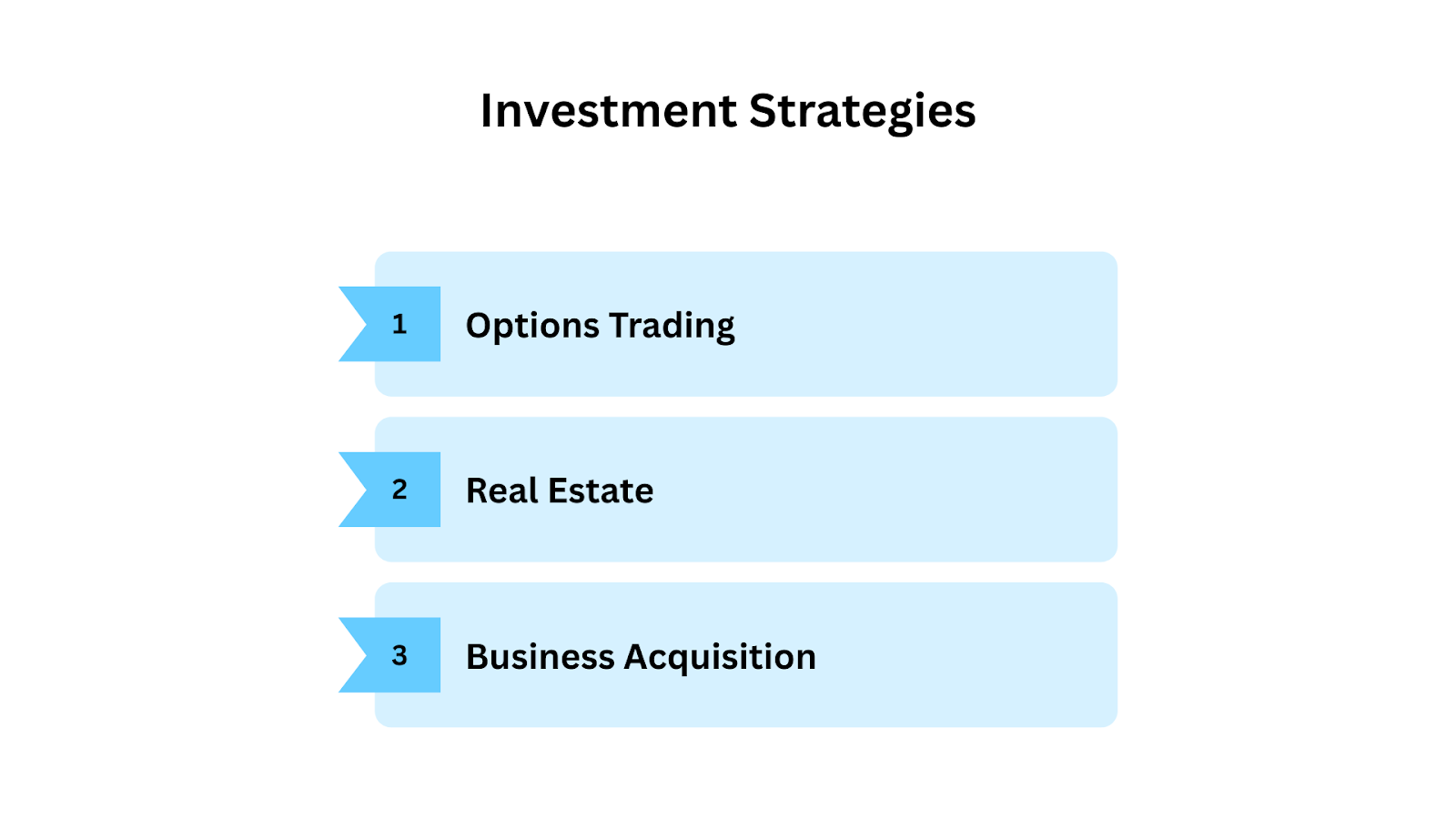
Investment Example:
For a long call option with a strike price of USD 300 (SAR 1,125) and a premium of USD 50 (SAR 187.5), the breakeven point is calculated as:
Breakeven Point = USD 300 + USD 50 = USD 350 (SAR 1,312.5).
The investor profits if the stock price rises above USD 350 (SAR 1,312.5); otherwise, the trade incurs a loss.
Also Read: Struggling to Consolidate Reports Across Your Multi Brand Company? HAL ERP’s to the Rescue!
The breakeven point plays a significant role in business decision-making and investment planning. Now, let’s explore the benefits that breakeven analysis can provide to your business operations.
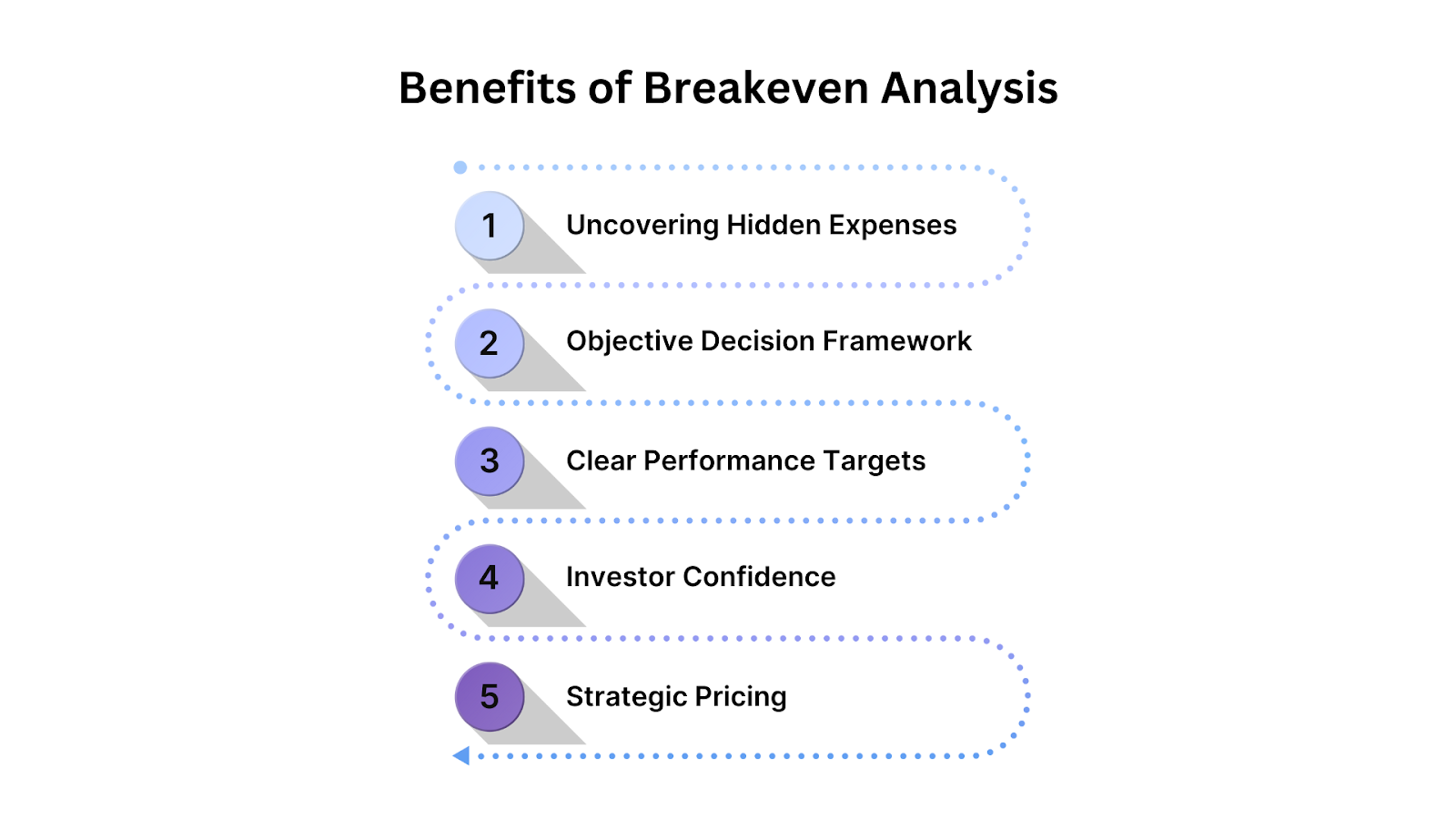
Breakeven analysis offers several key advantages that can significantly enhance decision-making and operational efficiency within a business. Here are some of the primary benefits:
Also Read: Top Accounting Software for Small Businesses in 2025
Breakeven analysis offers valuable insights that help businesses set clear targets and improve operations. However, it is also important to understand the limitations of this financial tool.
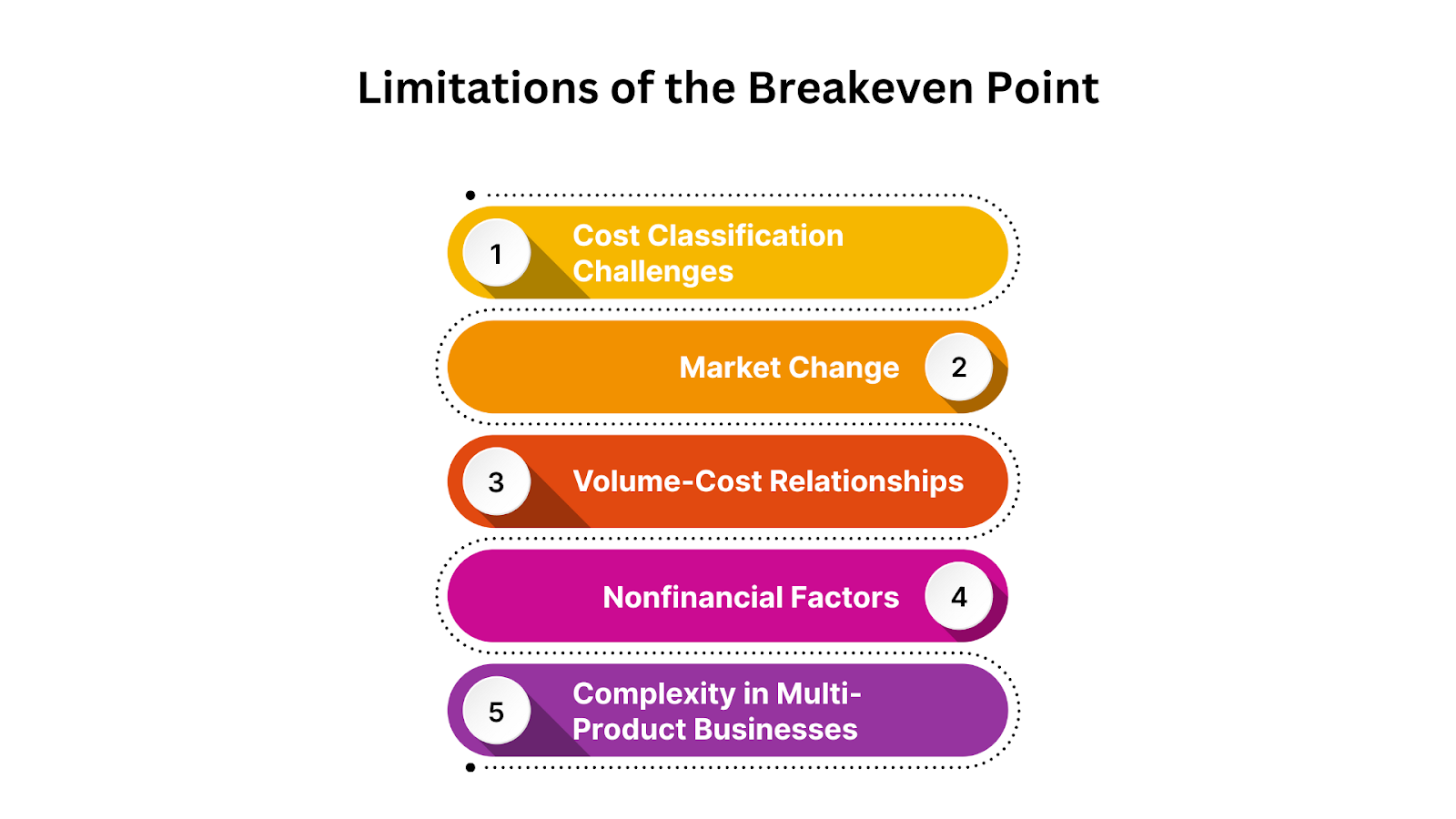
While breakeven analysis is a powerful tool for understanding profitability, it has several limitations that businesses must consider:
Understanding these limitations is important for businesses to make more informed decisions and ensure that their financial strategies are based on a comprehensive understanding of their costs and market conditions.

As companies look to strengthen their break even position, technology becomes a critical enabler. This is where an intelligent, integrated system like HAL ERP supports smarter financial practices and sustainable growth.
HAL ERP offers features that directly contribute to accurate financial management, including calculations for breakeven points and overall profitability. These features help businesses refine their financial processes, providing them with the tools to achieve greater control and visibility into their financial health.
HAL ERP’s integrated financial management capabilities are ideal for businesses aiming to gain greater control over their finances and boost profitability. HAL ERP enables finance teams to act with precision and agility. With these success stories, discover how organizations across Saudi Arabia are using HAL ERP to strengthen financial operations, enhance retained earnings, and make more confident, data-driven decisions.
Calculating the breakeven point is a vital exercise for businesses, as it provides clarity on the minimum sales required to avoid losses. By determining the break-even point, businesses can better strategize pricing, production, and resource allocation. However, it’s crucial to understand both the advantages and limitations of breakeven analysis. While it provides clear financial insight, it’s important to consider fluctuating costs, market changes, and multi-product complexities that can affect its accuracy.
To simplify financial management and gain deeper insights into breakeven calculations, HAL ERP offers comprehensive tools that automate key financial processes, provide real-time data, and ensure accurate calculations for optimal business decisions. By leveraging the features of HAL ERP, businesses can enhance their financial health, improve profitability, and make informed decisions that drive long-term success.
Book a demo today to explore how HAL ERP can streamline your financial management and help your business stay ahead.